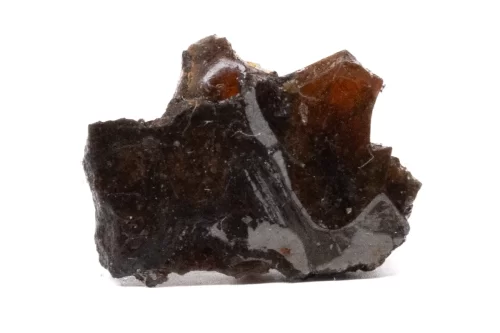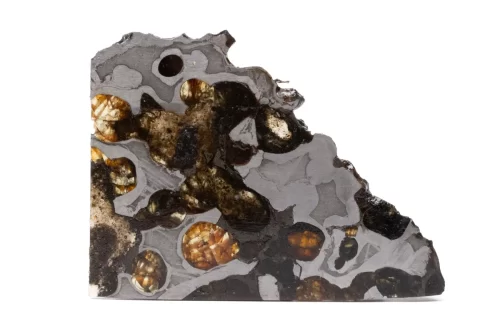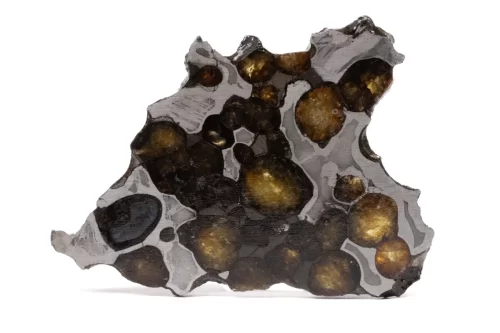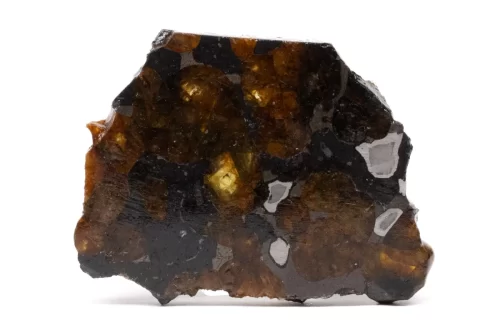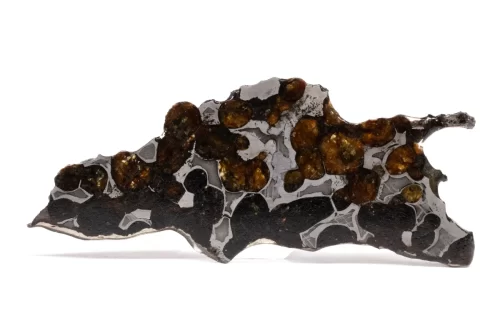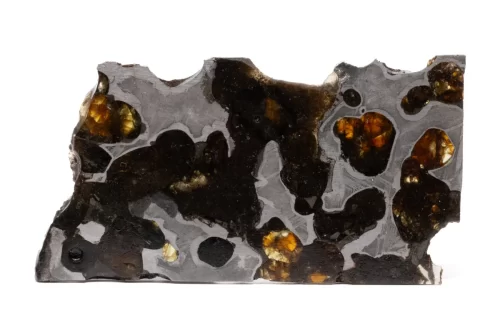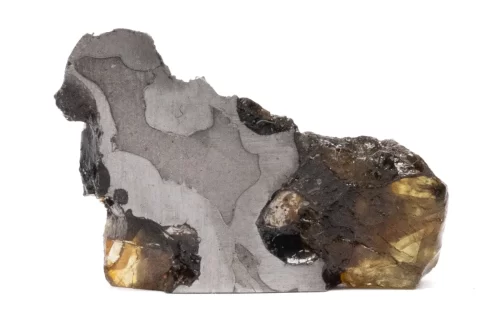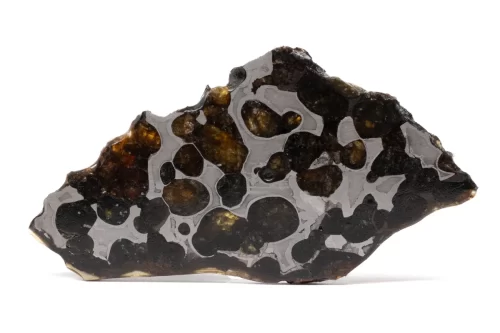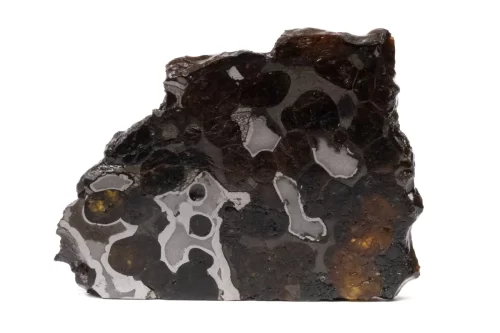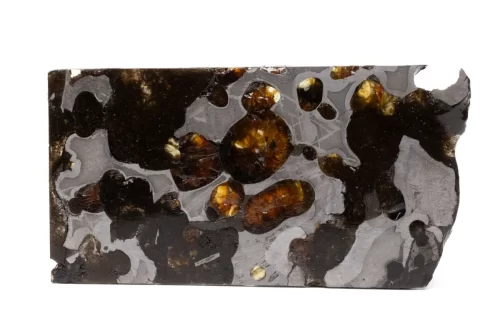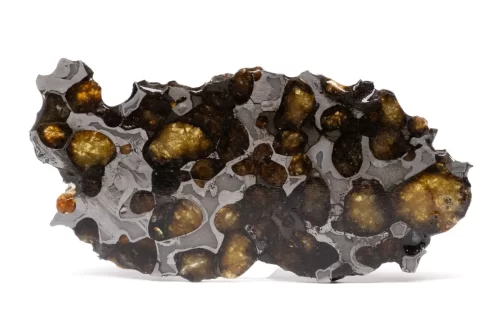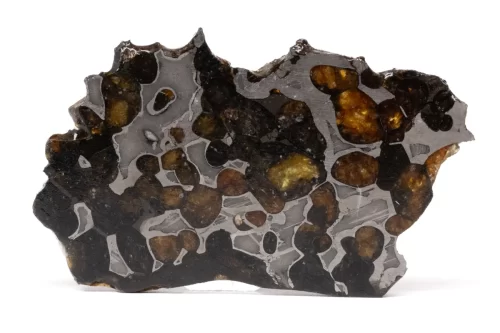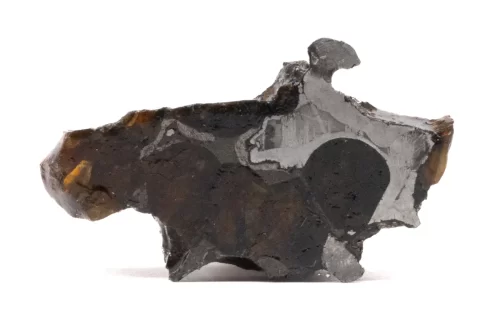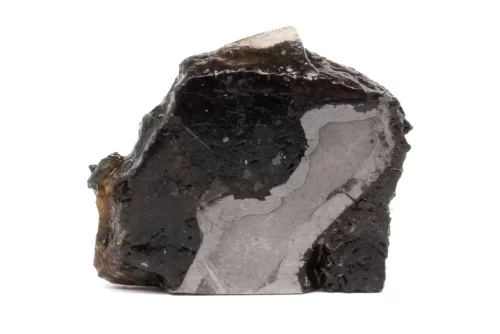Brenham
Pieces of the Brenham pallasite were said to be used by Native Americans during The Hopewell era to fabricate iron knives, chisels, buttons, jewelry, and beads. Ever the travelers, these space rocks were found as many as 1,000 miles from their purported fall site, having been transported by Native Americans. In 1882, Eliza Kimberly found the first pieces of Brenham to be positively identified and examined by an academic institution, which was Washburn College, Topeka, Kanasa. Professor F. W. Cragin, who examined the strange visitors, purchased a few. He was followed by Clyde Fisher of the American Museum of Natural History, who excavated more pieces, and even Harvery Nininger himself, who visited the locale in the 1920s and 1930s.
In 1949, a particularly spectacular Brenham mass was discovered by meteorite collector H.O. Stockwell—who also had a part in recovering the Bondoc meteorite. At the time, the gargantuan 453.6 mass was known as “The World’s Largest Pallasite Meteorite.” Stockwell had experience as an electronics repairman and had designed a metal detector specifically for meteorite hunting; with help from the Hedden Company, Stockwell ended up with a contraption that looked like a radio mounted on a wooden wheelbarrow.
Now called “The Space Wanderer,” Stockwell’s original nickname for his find, the mass is currently displayed at The Big Well museum in Greensburg, Kansas. The city had purchased the mass from Stockwell for $1,250 in 1949—estimated to be equivalent to about $15,910 in 2024. Fast-forward to 2005, geologist Philip Mani and hunter Steve Arnold uncovered the largest fragment of Brenham yet found. The hulking mass weighs in at a whopping 650 kilograms and is currently housed in a private collection.
Showing 1–16 of 20 results
